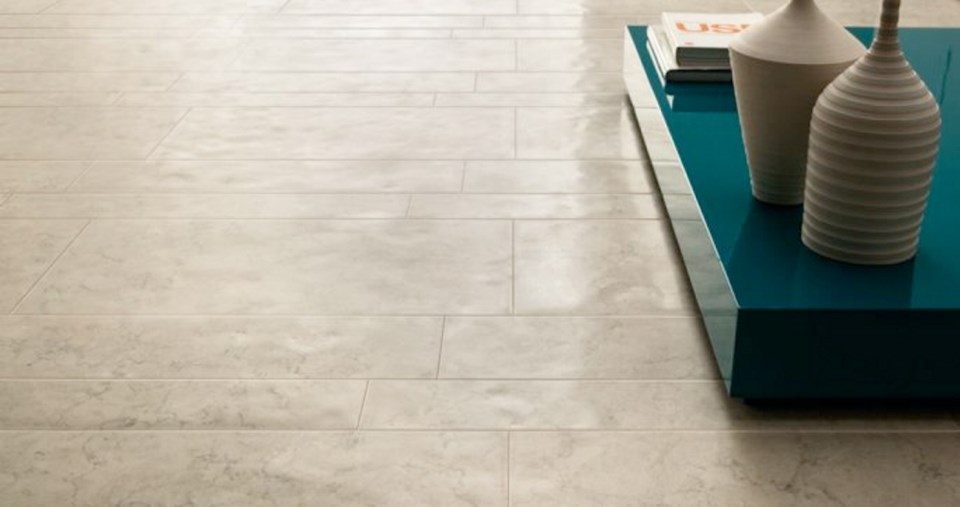The past decade has seen many beautiful additions to flooring products. The traditional quarried stones — granite, marble and slate have been made more affordable by manufacturing stone veneers. You have the look and feel without the weight. This transition to veneer is gaining popularity as the manufacturing processes become more skilled, combining manmade and stone strata. Imaginative applications in colour and pattern offer us a rich design palette with which to work.
Another option that has captured the popular market is the appearance of porcelain tiles. Porcelain is a man-made product, a hard, white, translucent material that is fired at low temperature and then glazed at high temperature.
The most common usages for porcelain have always been household china and objets d’art such as figurines, pitchers and bowls. Porcelain originated in China. By the Han Dynasty period (AD 196-220) glazed ceramic ware developed into porcelain. Over the centuries, trade brought it to Europe where such famous manufactures as Royal Copenhagen in Denmark, Faience in France and Aynsley, Royal Crown Derby, Wedgewood and Spode in Britain created fine porcelain wares that are still the benchmark of quality tableware.
But who would imagine that such a refined and elegant product would become a building material? Walking on the china service does seem ludicrous. But porcelain, which is not to be confused with ceramic, is stain resistant and impervious to water absorption. Due to these practical characteristics, a porcelain floor makes sense.
Porcelain floor tiles hold up in high traffic areas and changes in temperature, and are more versatile and durable than ceramic tile. Porcelain is man-made, not quarried, which brings the cost down. Erthcoverings is a company that sells stone and porcelain tiles. Their Memento series was designed in collaboration between world-renowned natural stone artisan Giovanni Barbieri and Italy’s most respected porcelain company CeramicaVallelunga.
Memento is a line of beautifully crafted porcelain tiles made in the tradition of timeworn natural stone. The face of each tile features natural veins that mimic real stone. The surface of each tile is then “timeworn” to create an irregular surface finish which emulates the wear and tear found in centuries-old stone floors.
Memento’s floor tile shown here in the Cortina colourway has a luxurious pearlescent appearance that belies its hardwearing qualities. The style is as compatible in a contemporary loft as it would be in a traditional home filled with wood and whimsy. The style comes in floor tiles as well as mosaics, so you can create patterns with borders or other designs within the body of the floor.
The wave wall panels are called Ambra, and exhibit a striking undulating pattern that can be natural or accented with coloured ribs. It makes a tactile focal point in any room, dramatic and modern, suited to decor that showcases handhewn wood pieces, rustic fabrics and contemporary art.
Even newer to the market are huge porcelain panels — four feet by eight feet — that we will be seeing on floors as well as kitchen countertops and whole new worlds of backsplash and bathroom wall installations.
Historic examples of rooms decorated entirely in porcelain tiles can be found in several European palaces, including the Royal Palace of Madrid and The Porcelain Tower of Nanjing. And not just for interior installation, high quality porcelain tiles and panels are suitable for exterior cladding as well. Why not consider the porcelain touch for the outside walls and patio floor of your home to create the ambience of a European villa.
Debbie Travis’s House to Home column is produced by Debbie Travis and Barbara Dingle. Email questions to house2home@ debbietravis.com. Debbie’s website: debbietravis.com
